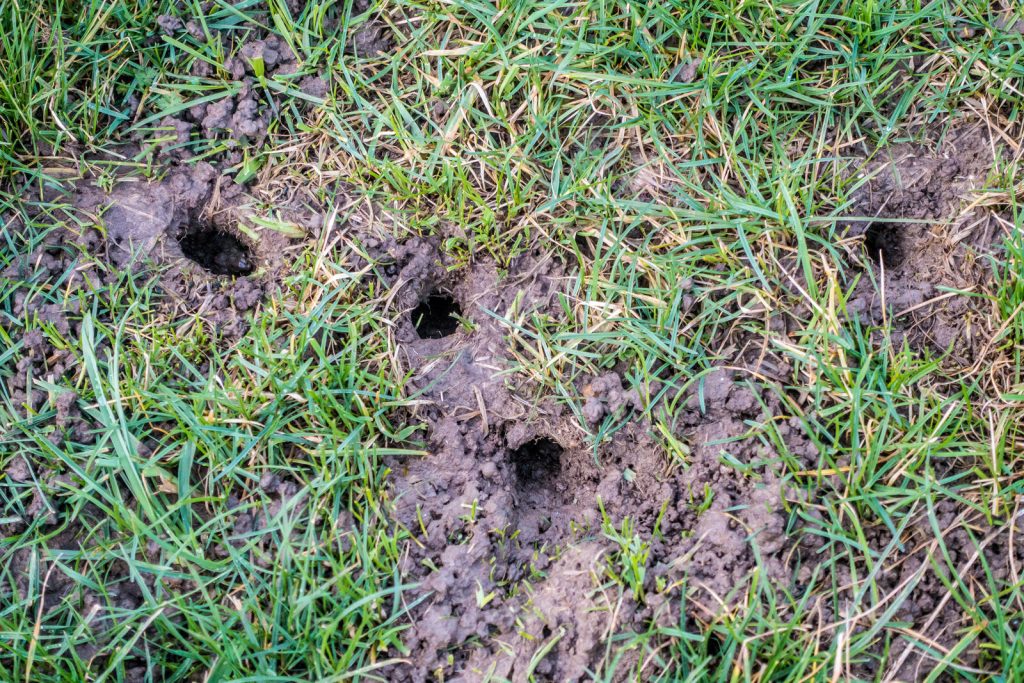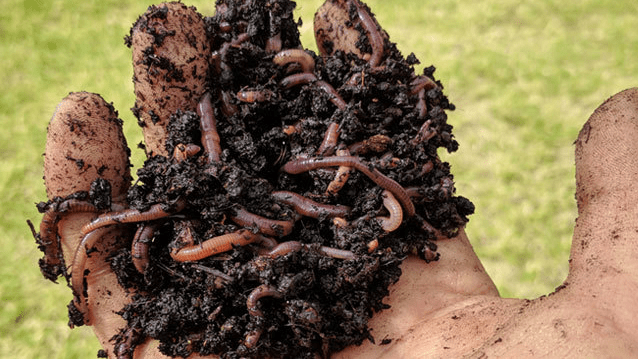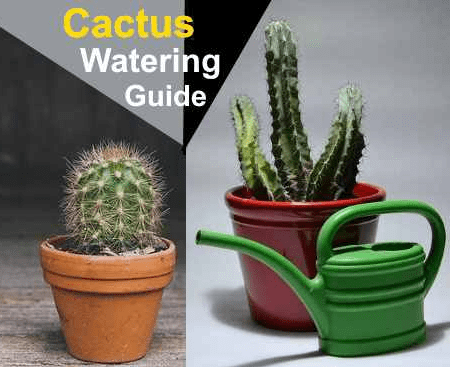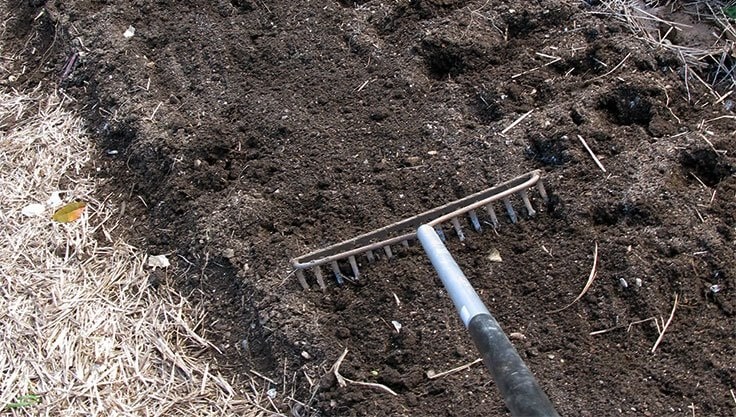Voles in the garden can quickly become a nuisance, as they love to gnaw on root vegetables, flower bulbs, and even the roots of roses. Here’s how to get rid of these pesky rodents!
Voles are a gardener’s nightmare. That’s why many methods have been developed to remove them as soon as possible.
Voles may look cute, but they are often troublesome rodents for gardeners. These underground dwellers can cause significant damage to gardens. When discussing voles in the garden, most gardeners refer to the European water vole (Arvicola terrestris), as it is the species that causes the most destruction.
Voles prefer to burrow in light to medium, fresh, and moist soils. In nature, they establish their underground tunnel systems in meadows, open deciduous and mixed forests, and embankments. In some regions, there can be up to 1,000 voles per hectare, with population explosions occurring every 5–8 years, especially after a snow-heavy winter when they can feed, dig, and expand their tunnels undisturbed under the snow cover. From March to October, a female vole gives birth three to five times, producing 3–6 young per litter. These young leave the nest after three weeks and start digging their own tunnels, meaning that each burrow is typically home to just one vole.
Since voles dig their tunnels in gardens and damage plant roots, no gardener wants them around. Here’s how to recognize vole activity and the best methods to remove them.
Contents
Mole or Vole?
After the snow melts, gardeners may notice mounds of soil in their gardens. Before jumping to conclusions, it’s essential to determine whether a mole or a vole is responsible. Moles are protected by law and cannot be killed or disturbed, whereas voles are not protected.
In early spring, small holes appear in garden beds as the snow and leaves clear away. But who dug these tunnels? Moles create oval, cross-sectioned tunnels that remain open for several days. They also create high, dome-shaped mounds year-round. Voles, on the other hand, make round holes that are resealed within six hours. Their mounds are smaller and irregularly distributed. However, in autumn, vole mounds may be larger. Fortunately, there is a simple way to confirm which animal is present.
The Disturbance Test: Identifying Voles

The disturbance test helps determine whether a mole or a vole is inhabiting your garden. Open a tunnel section about 20–30 cm long. If the hole is resealed within minutes, hours, or at the latest, the next day, you have a vole problem. Voles patrol their territory every 2–4 hours, searching for food and repairing tunnel damage. Moles, in contrast, leave the holes open.
For a more accurate result, disturb the tunnel system in several places to pinpoint the problem area. If voles are present, action should be taken before the gardening season starts, as they reproduce rapidly.
Vole entry points are round and may appear in lawns, garden beds, and even greenhouses.
How to Get Rid of Voles: Effective Measures
Many gardeners rely on home remedies to drive voles away:
- Flooding tunnels with elderberry slurry can deter them, but elderberry leaves are often unavailable in early spring.
- Placing predator fur or human hair in their tunnels may help.
- The smell of rotting fish, vinegar, buttermilk, or whey also repels voles.
However, most gardeners eventually resort to traps placed inside the tunnels. The most reliable long-term solution is to block their access by planting fruit trees in wire baskets or protecting vegetable beds with wire fencing (50 cm underground and aboveground).
Attracting Natural Vole Predators
To keep voles out of your garden, natural predators can be your allies year-round. Various weasels, especially the least weasel, are excellent hunters.
Providing hiding places like tree stumps, stone piles, or wood stacks can encourage them to settle in your garden. Dogs can also help detect voles, but they may dig up your lawn in the process, causing further damage.
In rural areas near forests, natural predators such as barn owls, tawny owls, foxes, and wild boars also help control vole populations. Birds of prey benefit from perches where they can scan the area for voles. Since voles have keen senses and are quick to escape, attracting these predators can make a significant difference.
A strong, well-fed, and experienced hunting cat can also help keep your garden vole-free. Cats also catch field mice, which similarly dig tunnels. If you don’t have a natural predator, specific plants can help deter voles.
Plants That Repel Voles
Certain fragrant plants can help keep voles away when planted around vegetable beds. Additionally, materials like walnut leaves, camphor, or branches from fir or elderberry can be mixed into the soil to repel voles.
Common vole-repelling plants include:
- Basil
- Elderberry
- Hound’s tongue
- Crown imperial
- Garlic
- Daffodils
- Sunflowers
- Sweet clover
- Onions
- Cypress spurge
Note: Some of these plants, such as the crown imperial, are toxic to other pets.
Does Coffee Grounds Work Against Voles?
Coffee grounds are frequently used in organic gardening as a fertilizer, pest deterrent, and even as a remedy for potato beetles.
The smell of coffee is unpleasant for voles. Sprinkle dried coffee grounds at tunnel entrances and exits to drive them away. However, the scent dissipates quickly, requiring frequent reapplication.
Does Baking Powder Work Against Voles?
Baking powder is often suggested as a vole deterrent, but it has little success in gardens. It is better to rely on the proven methods mentioned above.
Plants That Voles Love
Voles are vegetarians and may seem indiscriminate, but they have favorite foods. An adult vole eats around 60–100 g of plant material daily, equivalent to 80% of its body weight.
In their natural habitat, voles prefer juicy roots of wild plants such as dandelion, wild carrot, hogweed, sorrel, wild chervil, plantain, and yarrow.
In ornamental and vegetable gardens, the most common plants targeted by voles include:
Root Vegetables:
- Carrots
- Celery
- Black salsify
- Jerusalem artichoke
- Parsnips
- Beetroot
Tip: Some gardeners plant Jerusalem artichoke along their property boundaries to lure voles away. However, this strategy is not always successful.
Bulbs:
- Tulips
- Snowdrops
- Lilies
Perennials:
- Coral bells
- Peonies
- Daylilies
- Blazing star
- Foxtail lilies
Ornamental Shrubs:
- Wisteria
- Clematis
- Roses
- Other small ornamental shrubs
By implementing these strategies, you can effectively keep voles at bay and protect your garden from damage!










